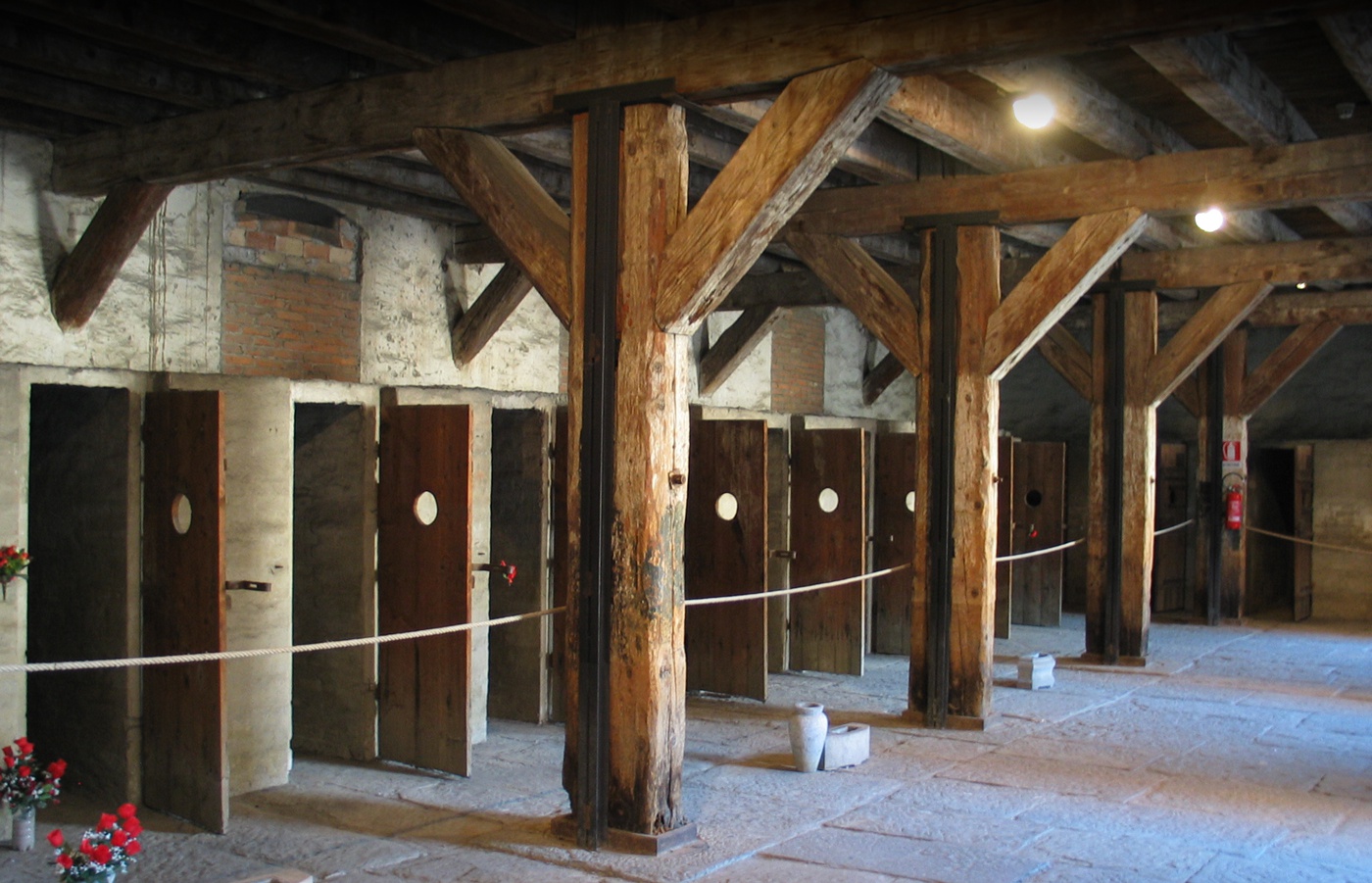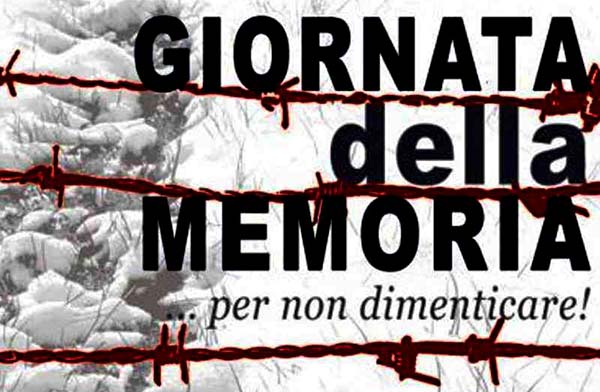27 JANUARY AND 25 APRIL: THE CELEBRATIONS. REMEMBRANCE DAY AND LIBERATION DAY
Trieste: about current revanchism and antisemitism
FROM FASCISM TO THE AMBIGUOUS “DEMOCRATIC NATIONALISM” OF THE ITALIAN LEFT WING

This year, once again, with much ambiguity and hypocrisy, in Trieste there were celebrations on both April 25th, the Italian Liberation Day, and January 27th, International Holocaust Remembrance Day.
The first date has absolutely nothing to do with our city’s real history, because we should celebrate the victory of European Resistance and of the Allied Forces instead.
The second date regards Trieste very closely, because the city hosts some especially tragic places, and it is fundamental to remember the moral and material horrors of racial ideologies and genocidal persecutions brought upon Europe by Italian fascism, by the Nazi regime, and by other European fascisms.
In Trieste, racial extermination has a tragic symbol in the turning of the San Sabba rice mill (Risiera) in a prison camp where prisoners suffered tortures and were murdered (another camp remained unfinished in Prosecco – Prosek). In Trieste, as in the rest of Europe, this extermination affected especially the Jewish part of our population, but it didn’t spare the Roma and Slavs either, because they were themselves regarded as “inferior races”, as well as systematically targeting physically and mentally disabled people, and people who did not conform to heterosexuality.
Furthermore, as mentioned before, Trieste has little to do with the Resistance and Liberation movement in the Italian peninsula, because the city’s liberation didn’t occur on April 25th, rather, on May 1st, after two days of harsh fights in Basovizza – Basovica and Opcina, thanks to the Allied Forces from Yugoslavia (which included Italians) and from New Zealand, while WWII only ended with the May 8th, 1945 German surrender, because the city was under German control (Army Group Ostmark) and during their retreat the German divisions kept fighting in the hinterland for two more weeks.
Also, it is fundamental keeping in mind the fundamental difference between racial persecution and that suffered by political opponents and Resistance fighters. Indeed, opponents were target because of their own ethical, political, and military choices, the risks of which they knew and faced with courage, under the pressing of powerful military, espionage, and propaganda networks, which portrayed them as rebels, bandits, and traitors, blaming them with atrocious crimes. On the other side, victims of racial persecution suffered extermination because of birth alone.
It is equally fundamental considering that those responsible of repression and extermination could do so also thanks to collaborationists who acted for ideology or money, and in Trieste they remained almost all unpunished.
But it is also necessary remembering that the political and racial propagandas of the time have left behind deep and dangerous prejudice in post-war democratic cultures and societies, where those ideas remained rooted, widespread, and influential from the right to the left, all across the political spectrum, even when this seemed impossible.
So much so that Trieste itself, in its Piazza Grande (Big Square, as in Main square), renamed “dell’Unità d’Italia” (“of Italian Unity”), where in 1938 dictator Mussolini proclaimed Italian racial laws to adhere even further to Hitler’s regime, with horrific consequences until 1945, only has, and since just 2013 (a good 75 years later!) a small plaque, and one people can walk on, placed thanks to a modest but good-willing committee, and inaugurated almost secretly, with a few representatives of the Municipality as the only attending authorities.
And still, the most paradoxical demonstration of racist prejudice is the one repeated, one year after another, in the official speeches that condemn the extermination of Jews underlining how that damaged local economy. As if all of them were actually wealthy, while the majority of them were ordinary people and poor, and as if the worth of human beings were measured on their economic and social standing!
As for April 25th, this year the celebration at the Risiera, which should unite the real remembrance of the Resistance in Trieste and in its hinterland with that of racial extermination, was instead exploited by mayor Cosolini (PD) for his own party’s political proclamation against “populist rage” and in the name of “national unity” which have nothing to do with any of it. Instead, those are slogans of Italian left wing’s ideological apparatus, which, ever since the Violante-Fini 1998 meeting (in Trieste) has joint forces, even in public, with the political and moral successors of collaborationism.
Even the President of the Italian Republic, Giorgio Napolitano, celebrated April 25th as a “rebellion against the foreigner” rather than against Nazism and Fascisms (weren’t the liberators in the Allied Forces foreigners as well…?), and even calling heroes two Italian sailors who are under trial in India, where they face charges for the murder of some poor fishermen.
He is also the same President who made the revival of old Nazi and Fascist propagandas about the “eastern border” his own, specifically, declaring 10 February a national day of mourning in order to politically challenge the 1947 Treaty of Peace which ended WWII and, among other things, established the Free Territory of Trieste.
It is important denouncing those drifts of ethical and historical conscience with clarity. And it is also time to stop it with the much widespread prejudice, be it seen as positive or negative, that Trieste’s Jewish community, as such, has “made Irredentism” and supported Italian nationalism even against Slovenes, Croats, and against the Free Territory.
The truth is that before 1918 the majority of Triestine Jews were firmly loyal to Austria-Hungary, just like the majority of other Trestines, both civilians and soldiers on the fronts of war, where many privates, underofficer, and officers were decorated. However, after WWI, just like any other local community, Trieste’s Jewish community suffered submission and “purges” by the few, violent Irredentisti who enjoyed the protection of the new Italian authorities and almost all of whom would later join squadrismo and fascism, persecuting both “the Slavs” and anti-fascist Jews, going as far as to repudiating them after the Italian racial laws.
Once again during WWII, a significant part of the few Triestine Jews who escaped deportations and exterminations joined the ranks of partisan Liberation War and fiercely fought with it since the beginning, certainly not in the last-minute local Italian nationalist CLN (Comitato di Liberazione Nazionale – National Liberation Committee). And so, after the war, discrimination hit them again, because, in an attempt to get back Trieste, Italy sponsored and armed Triestine neofascists who thrived even on antisemite literature, and promoted the worst racist and negationist prejudices and narratives.
All while the anti-nationalist core of Trieste’s Jewish community identified in support for the new independence, even with significant personalities like Fabio Cusin, the formidable historian and pro-independence politician who was also editor-in-chief of “Il Corriere di Trieste”, the Free Territory’s first and only independent newspaper.
He is the same Cusin, born in the prosperous Austrian-Hungarian Trieste of 1904, who wrote fundamental critical essays about Trieste and also about Italian history; he was much appreciated by Italian intellectuals, while in Trieste he was discriminated and attacked with the well-known ferocious unity of “democratic” nationalists, who labeled him as anti-Italian, and of antisemite fascists, who themselves called him an “antinational Jew”.
Fabio Cusin would be as horrified as we are seeing the recent, the monstrous union of the left’s remains, in the guise of a “democratic nationalism” that defines hypocrisy, with the old right that has never truly repudiate, even less fought against, both revanchism and antisemitism, and which on this very April 25th held its own public counter-demonstration in Basovizza – Basovica with fascist salutes and banners, in spite of their unlawfulness.
It is likely that Cusin would have never thought that possible. Not even in 1949, when he faced Umberto Saba’s much less aggressive nationalism, and speaking of the nationalistic falsifications of Trieste’s history and conscience wrote him that:
«Our tragedy is living in an era in which the promises of our fathers were not kept and instead, as a matter of facts, proved to be false and mendacious.
The crossing point broke, and we don’t believe in that past anymore. […] It didn’t go that way, we have been deceived: beware of deceivers, by now they can no longer hide behind good faith; the lie is revealed! »
And Fabio Cusin would have been certainly happy, together with Cergoly and all other of Trieste’s intellectuals, businessmen, and citizens of all ethnicities and faiths who gave life to the earliest defense of their new independence, to see it revived in our day, with new strength and democratic maturity, in the Free Trieste Movement.
Historicus
***
Originally published on “Trieste Libera News” No. 1, on sale May 1st, 2014.
Italian version: HERE
Suggested reading: “Trieste: the Goldbergers’ kosher Restaurant” from “Il Corriere di Trieste”. Read it HERE

